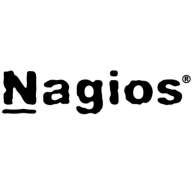

AppDynamics and Nagios Core are competitors in the application and infrastructure monitoring category. AppDynamics has the upper hand with advanced application-centric features and strong ROI, whereas Nagios Core stands out for its cost-effectiveness and strong infrastructure monitoring capabilities.
Features: AppDynamics is favored for its abilities in deep transaction analysis, real-time insights, and workflow mapping, providing robust tools for managing application performance. Its comprehensive transaction tracking helps identify and resolve issues effectively. Meanwhile, Nagios Core provides solid infrastructure monitoring, harnessing extensibility to monitor various endpoints, and offers reliable alert features even without extensive application-centric functionalities.
Room for Improvement: AppDynamics could enhance integration with AI tools to stay competitive, improve support for emerging databases, and refine its agent-based architecture to minimize potential performance bottlenecks. Conversely, Nagios Core could benefit from an updated user interface and a more intuitive configuration process to align with contemporary enterprise solutions and ease deployment complexities.
Ease of Deployment and Customer Service: AppDynamics provides versatile deployment options across multiple cloud environments complemented by a strong customer support team, although some users have noted room for improvement following corporate changes. On the other hand, Nagios Core's deployment is primarily on-premises, offering flexibility and a strong community-driven support base but lacks the robust customer service framework provided by AppDynamics.
Pricing and ROI: AppDynamics is a premium solution with high licensing fees but is often justified by its substantial ROI in complex environments due to operational savings and enhanced performance. Nagios Core, being open-source, is cost-effective with negligible financial outlay, providing excellent value, especially for organizations focused on infrastructure monitoring.
The customer service and support are helpful and responsive.
The solution is scalable.
We have reached maximum capacity in our tier, and extending capacity has not been cost-effective from Splunk's perspective.
I did not find any Docker solution available with it, and a separate instance has to be installed.
I tried many other solutions at work, however, in terms of Nagios, I haven't seen any disruption or downtime.
It is necessary to conduct appropriate testing before deploying them in production to prevent potential outages.
I can rate it nine out of ten.
Splunk AppDynamics provides an end-to-end view of the application but misses the infrastructure part, which is crucial.
If AppDynamics could develop a means to monitor without an agent, it could significantly improve application performance and reduce potential problems.
Customers have to pay a premium price, however, they receive considerable value from the product.
All these solutions at the moment are cheap, but it is like paying for insurance; you pay insurance to avoid major damage.
It has a very handy dashboard, providing live alerts and visibility for everything.
What I like the most about Splunk AppDynamics is the end-to-end observability for the application, along with traces.
The feature that I appreciate in AppDynamics Browser Real-User Monitoring is the intuitive and user-friendly dynamic mapping it creates for workflows.
The real-time feature provides me with insights into what's happening.


This is IT infrastructure monitoring's industry-standard, open-source core. Free without professional support services.
Splunk AppDynamics enhances application performance monitoring with advanced diagnostics and real-time insights, offering seamless end-to-end transaction tracking and infrastructure visibility.
AppDynamics provides critical tools for businesses to analyze application behavior and performance. Through innovative features like transaction snapshot analysis and adaptable dashboards, users can quickly identify and address issues, ensuring high levels of system uptime and efficiency. It is designed to support complex environments including Kubernetes and AWS, enhancing user experience by detecting performance issues early. Despite needing improvements in network monitoring and integration, it remains a robust option for tracking application health.
What are the key features of AppDynamics?In industries like financial services and e-commerce, AppDynamics facilitates performance tracking across distributed systems, optimizing infrastructure to meet consumer demands. It excels in environments needing precise transaction monitoring and is pivotal in delivering high value and satisfaction.
We monitor all IT Infrastructure Monitoring reviews to prevent fraudulent reviews and keep review quality high. We do not post reviews by company employees or direct competitors. We validate each review for authenticity via cross-reference with LinkedIn, and personal follow-up with the reviewer when necessary.